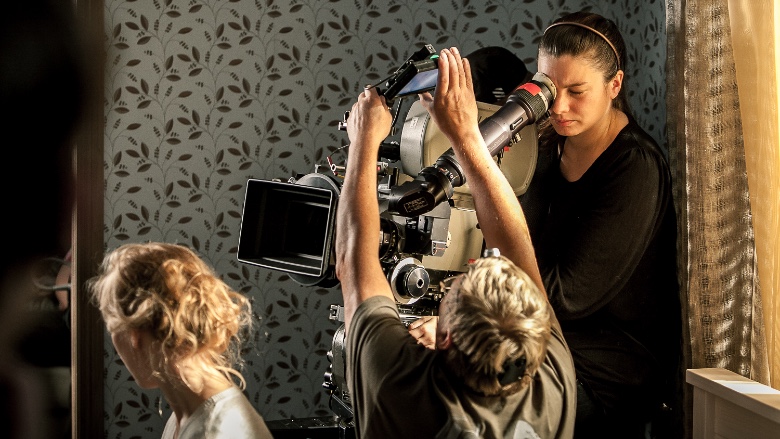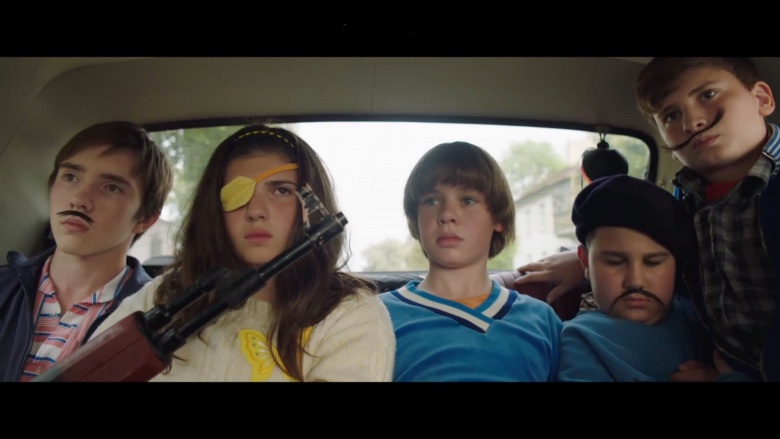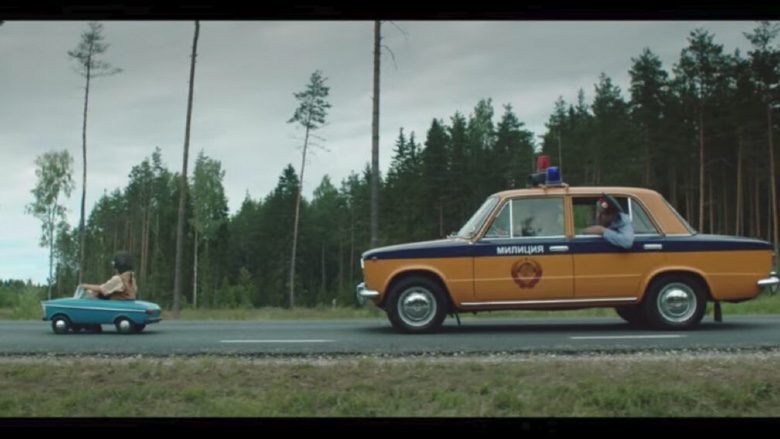
One of the highlights of the annual EnergaCAMERIMAGE festival, the IMAGO Diversity and Inclusion panels give cinematographers across the globe the opportunity to share knowledge and experiences with colleagues. Started in 2016, the panels are free-wheeling explorations into how gender and ethnic minorities can gain footholds in the field of cinematography.
IMAGO, the International Federation of Cinematographers, came together in the 1990s as a way to coordinate industry guilds and societies. Its membership now represents more than 4,000 cinematographers from 56 national societies. Through its committees, the federation campaigns for cinematographers’ rights, including working conditions, authorship legislation, and staffing initiatives.
Elen Lotman, ESC, the current Co-Chair of the Diversity and Inclusion Committee (with Nina Kellgren, BSC) and member of the Board of IMAGO, has hosted the Camerimage panels since their inception, including 2020’s digital version. She was Director of Cinematography on Goodbye Soviet Union (Hüvasti, NSVL), the first Estonian feature to win the Tallinn Black Nights Film Festival Audience Award. Lotman is also defending her PhD. dissertation on the emotional impact of portrait lighting. She spoke with Below the Line via Skype from her home in Tallinn.
Below the Line: How did the Diversity and Inclusion panels at Camerimage start?
Elen Lotman: In the 2016 spring meeting of the IMAGO board, Nina Kellgren suggested starting a Diversity and Inclusion Committee, which we then co-chaired. It was a topic already being discussed, through #MeToo for example, and we felt it would be good to bring those discussions to Camerimage.
We had an idea we wanted to emphasize: If you can see it, you can be it. We would present minority cinematographers simply as cinematographers, change the established view and unconscious bias of what a cinematographer looks like.
BTL: How does IMAGO differ from a group like the ASC [American Society of Cinematographers]?
Lotman: IMAGO is the only organization that represents cinematographers globally, through its 56 member organizations. It’s a platform to bring together the different faces, traditions, shared knowledge from around the world.
For example, one of IMAGO’s pressing concerns is authorship of the image. The Anglo-American film industry takes a specific view of who the author of the image is and how that authorship is handled. Europe takes a different position. For example, Estonia sees the cinematographer as one of the co-authors of the film. So if I shoot a feature, by Estonian law I am considered a co-author. I have the right to receive remuneration, but I also have legal protection in terms of how the image is presented.
IMAGO is working to extend those protections to cinematographers everywhere, not just Europe.

BTL: What topics do the Camerimage panels cover?
Lotman: The first year, 2016, there was a lot of energy in the room. I think people were shocked by the results of the US elections, but also empowered. Those issues seemed to have created a lot of emotional wounds by 2017, when people in the audience were really, really depressed about Trump and the way this leadership was affecting diversity and inclusion globally. We had a number of organizations represented on the panel, and it seemed that people felt frustrated because these organizations weren’t solving their problems immediately.
In 2018, we returned to the idea of cinematographers speaking about their personal experiences, how they deal with issues. We also discussed family models, how to balance your family and work.
But we have always focused on inviting wonderful minority cinematographers to our panels and master classes to champion the “If you can see it, you can be it” idea — Rachel Morrison, Bradford Young, Charlotte Bruus Christensen, Natasha Braier, etc.
BTL: What happened when you switched to an online platform for 2020?
Lotman: 2020 was a bit more focused than previous years. We focused on specific issues, like how discrimination, unfair treatment, occurs under different phases and stages.
Film schools around the world have become more diverse, for example. At the same time, we can chart specific turning points where diversity suddenly drops. Five or six years after film school, women and other minority cinematographers disappear from the mix. Higher-budget films go to the less diverse.
Mid-career cinematographers who want to step up to higher budgets or different genres face this glass ceiling, a cut-off point they can’t get past. In our panel we tried to talk about practical solutions to these problems.
BTL: Is diversity something that you can legislate?
Lotman: Not legislate so much as help establish policy. In some countries, film institutes have systems in place that promote diversity through incentives or trainee programs. The IMAGO awards program, for example, gives everyone within its member societies an equal chance to compete with the handful of titles that tend to dominate film festivals. Our juries are always remarking about fantastic films with unique cinematography that they never get to see anywhere else.
BTL: On top of all this, you’re studying for your Ph.D.?
Lotman: I have my defense coming up. It’s a hybrid of scientific study and creative research about how portrait lighting affects the way we feel about characters on the screen. I did some experiments with neuroscientists and psychologists about lighting and empathy that connected to my own work as a cinematographer.
BTL: Can you talk about Goodbye Soviet Union? At what stage did you join the production?
Lotman: The Estonian film industry is mostly state-supported, so you can see what projects receive development funding. I was curious about this one, so I wrote to the director, Lauri Randla, who lives in Finland. It turns out we were born in the same month of the same year, in the same hospital. And when I read the script, it was about a boy and a girl born in the same hospital. The coincidences were unreal.
BTL: Goodbye Soviet Union is a period coming-of-age drama set in the early 1970s. How did you and Randla agree on a visual style?
Lotman: The three of us, Randla and Production Designer Jaana Jüris, formed a strong bond during prep. Early in preproduction we shot a trailer for additional development funding that in hindsight was quite interesting. We did a scene of war games from the script.
Once we finished it, we hated it. The Estonian Film Institute didn’t like it, the producer didn’t like it, no one liked it. We didn’t understand what happened. Why did we create something that was so wrong for this film?
When we studied it, we realized we had created a very, very stereotypical image of the Soviet Union, a bleak one that was like Soviet realism. Clichés can often feel right because you’ve seen them before, so in creating them you may not realize you’re going in the wrong direction.

BTL: The movie itself doesn’t look like the Soviet realist films of the period.
Lotman: Yes, because we decided to jump into visual exploration to find something more unique. Almost accidentally we came across this book called Estonia Year 1979 [Eesti aastal 1979] by Priit Vesilind, a National Geographic photographer and expat Estonian. He lived in US but had a chance to peek behind the Iron Curtain in 1979 with his camera and probably Kodak Ektachrome stock. We were flabbergasted by how colorful his photos were, how many primary colors were in them.
When I went through my own photo albums from the time, I realized that most of the images were shot on Agfa or Orwo, which were available back then in the Soviet Union. So the images we have of our past actually have faded colors which affect our memories. Neuroscience teaches that memories are not static, they are constantly revisited and painted over. So I realized that the inferior technology used in Soviet Union back then changed how we remembered. Also, we agreed that this is a film about childhood, and children live colorful lives whether they grow up in the Soviet Union or anywhere.
Once we made those decisions, we started adding other elements, like the fractal patterns we found in Soviet modernist utopian architecture. Again following neuroscientific research, if you tap into human brain’s tendency for patternicity, you can use it to create a sense of visual unity. We used hexagon and octagon patterns everywhere, like wallpaper and windows, even bokeh (through custom-made cardboard apertures by my AC Erik Õunapuu and Peter Kollanyi) and catchlights (a custom-made hexagon shape reflector by my fantastic gaffer Andrus Ilp).
We did a classical script reading and breakdown, but then I ran the script through a software program used in corpus linguistics, and some of the patterns that emerged from that we developed into visual motifs.
BTL: How did you use your own memories of the period?
Lotman: So many of the incidents in the script were exactly how I remembered. Eating a banana was sacred. Commercials on Finnish TV — the Soviet Union had commercials for things like “chicken” or “lemon.” You didn’t see products. One night at my grandparents’ place I watched a Finnish advertisement for yogurt. It was a family running around in the autumn, throwing leaves in the air. Everyone was so happy. I remember thinking yogurt must be the best thing in the world, and I will never know how it tasted. I will never be able to try it.
BTL: You had to stage some extended and intricate shots in Goodbye Soviet Union, like one of students descending a school staircase and emerging into a political demonstration.
Lotman: I had very good Steadicam and crane operators (Janar Volmer and Siim Kaarel Saluri) and a very good AD team lest by 1st AD Greta Varts. In these situations, it’s really important that I know for sure that we actually need the shot, because it’s very expensive. You need to fight for it, and you have to be ready to prove why you need it.
When I ran the script through the software program, I tracked interior and exterior scenes. Also day and night scenes. We saw that the day and exterior scenes predominated the first half of the script. I understood that we had to establish the film’s period then, because later scenes were at night, in apartments, when the period wouldn’t be as obvious. So based on this, it was much easier for me to explain to everyone that we needed those expensive early scenes with lots of extras, movement, energy.
It was not a big-budget movie. We really tried to max out the budget as much as possible. Every second, every movement, every piece of equipment, every single dolly shot was preplanned for like half a year. It wasn’t just storyboarded — I created a storyboard with a timeline, with music and dialogue recorded from the table reads attached. So I think it was the most meticulously planned movie I have ever done.
BTL: Wasn’t it difficult fitting child actors into those logistics?
Lotman: The kids were extremely well behaved. The main actor, Niklas Kouzmitchev, was super, super disciplined. Once the kids were in character, shooting was actually a joy, a constant surprise. I’m amazed by kids’ ability to be genuine while the camera is running. When the camera stops, and they start running around and losing concentration, you’re like, “What the hell? Weren’t you in character like a millisecond ago?”
What I always try to do is minimize the technical aspects so that the actors, not only the children but all the actors see the machinery as little as possible. When we’re shooting, I am also trying to prep at least one setup ahead, so my camera and lighting crew are ready when we move on. That way the actors and director can be in the moment and forget about the technical side.
BTL: Have you been able to deal with working under Covid-19 protocols?
Lotman: I think it works — people are getting used to how to work with masks; it has become our new normal. Some productions have color coded areas, temperatures are measured every morning, key people are tested frequently. Only three people can eat at a table, etc., etc.
But, you know, Estonians, our natural personal distance is more than 2 meters anyway, so social distancing is not hard.
Photos courtesy B-Plan Distribution, except where noted.





